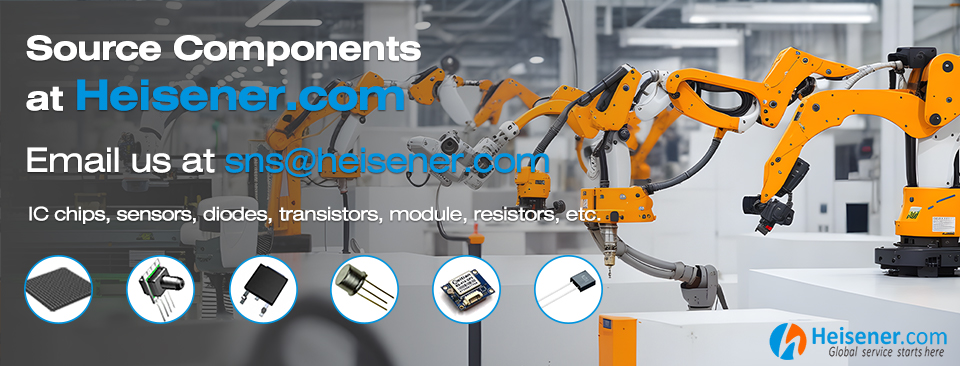For those invested in the tech sector or looking to invest, welcome! This is the start of a series of introductory articles designed to generate an overall understanding of the sector’s history and fundamental purpose of a variety of topics! Perhaps you are an electronic component supplier, and would appreciate a short read to confirm what you already know. Maybe you are a logistics coordinator, processing shipments without knowing details of the electronic parts you’re shipping. Not to fear! Today, we discuss sensors. In this article, we highlight a variety of sensors that are commonly found in the field of robotics, their common uses, and perhaps most importantly, why we are using them.

When we speak about sensors in regards to robotics, especially assembly line robotics, we’re referencing the components that allow the machine to gather information about its surroundings.
They’re used to accurately detect parts and their position, and monitor the quality of products as they’re in production to catch defects early and facilitate predictive maintenance. Such sensors can be essential for automating quality assurance.
When it comes to the production of extra-fine or minute products (integrated circuits, microprocessors, semiconductors, etc), humans no longer possess the sensory ability to detect all levels of defect. Historically, assembly line workers manually sighted and / or physically tested products, proving to be an understandably slower process, and much more expensive at higher product quantities. In fact, the first modern uses of robots were for manufacturing! Another fun fact: stories of robots date at least as far back as 8th century ancient Greece, referenced in The Iliad as metallic mechanical servants with “intelligence in their hearts”.
In manufacturing, moving parts are a given. Rotation and vibration being nigh ubiquitous in assembly lines, wear and tear is guaranteed, and a reliable method to regulate maintenance pays dividends in preventing damages. In order to determine exactly when maintenance is required, and to what degree, assembly lines may employ tri-axial accelerometer sensors, torque sensors, IMU’s, or other sensors for detecting a vibration’s precise rotation speed, easily finding abnormalities or inconsistencies. Parts like these are invaluable to prevent catastrophic system shutdowns before they actually happen. Imagine reliably detecting a sore or twisted muscle before you begin your daily gym routine! Without a doubt, these sensors are some of the most commonly used, and will remain so for decades to come.
Another common type of industrial sensor is a temperature sensor. Remember, movement generates friction, and friction generates heat! Temperature regulation is as indispensable for automated industrial coolant systems as it is for our own body. Abnormal heat readings are a good indicator of system stress, making these sensors commonplace in manufacturing plants worldwide. In contributing to preventative maintenance, temperature sensors can indicate worn equipment, loose components, damaged parts, and even failure of other automated systems. With consistency being a key goal in every production process, temperature spikes are an easily detectable indication of a system not operating at its peak performance.
So far, we’ve been focused on mechanical sensors. Let’s consider some electrical sensors next, such as voltage sensors and current sensors. Voltage sensors can be wirelessly attached to machinery for simple monitoring of voltage data to quickly transmit possible problems with increased pushes from outside of your own system, such as those caused by electrical storms or malfunctions in a power grid. Alternatively, an electrical current sensor can measure increased draw, which can result when a part is using more effort to accomplish its function. Though less common, these sensors still see widespread use as both primary and backup prevention systems, especially in prevention of damage to your system from outside sources.
Moving away from manufacturing robotics, let’s discuss the field of automated or semi-automated drone robotics! Decidedly more popular to laymen and the general public, this encompasses aerial surveillance drones, motorized delivery drones, even the Mars rover drone Ingenuity! These types of robots utilize a staggering number of sensors, including the ones we’ve discussed above, as well as traditional GPS, stereo cameras, IR distance and ultrasonic distance sensors, encoders, pressure sensors, and more! Gyroscopes, whether mechanical or optical, inform the robot of many crucial data points. Sensors can be necessary in almost every moving part of a robot, even more so in fully autonomous drones that cannot rely on live human input when performing their tasks. It must be stressed that this list is non-exhaustive. There’s a forever increasing list of sensors being used in autonomous robotics, and trying to list them all and their differences would be folly.
As a thought exercise, try sitting at your desk, closing your eyes, and lifting one random finger. You know which finger you lifted, as well as approximately how far off the desk it has been lifted. You can tell if it is damaged internally, makes contact externally, and you can sense pressure and temperature with just one digit. How many sensors can you think of that are being used here?
Summarily, we must remember that sensors are one the most vital components of modern manufacturing processes, performing tasks that prove difficult or impossible for humans to do on their own. Sensory systems provide data on acceleration, orientation, velocity, temperature, and other crucial factors to determine when machines are working as expected. From the most basic tactile bumper switch to ultrasonic sensors in anti-collision safety systems, humanity will likely always require the production and use of robotics sensors. Such assuredness in future use is important to investors, manufacturers, and distributors alike.
We hope you enjoyed this article! Join us next time for another cursory look into fundamental areas of the tech sector!
About the Author
This article was written by Heisener, an industry-leading electronic components supplier in semiconductor industry. They commit to delivering most-needed, obsolete, franchised, and hard-to-find parts to clients worldwide.
Media Contact
Name: Elsie Deng
Email: sns@heisener.com
Stay connected on our social media :’)